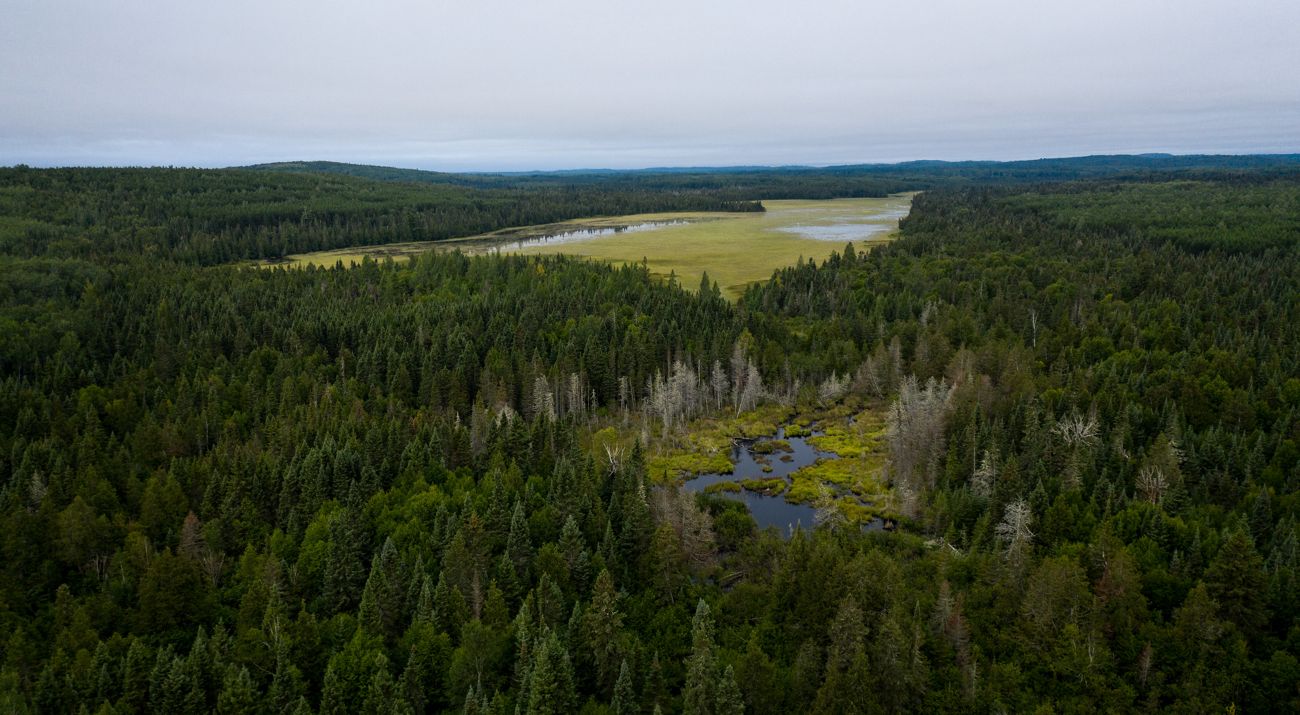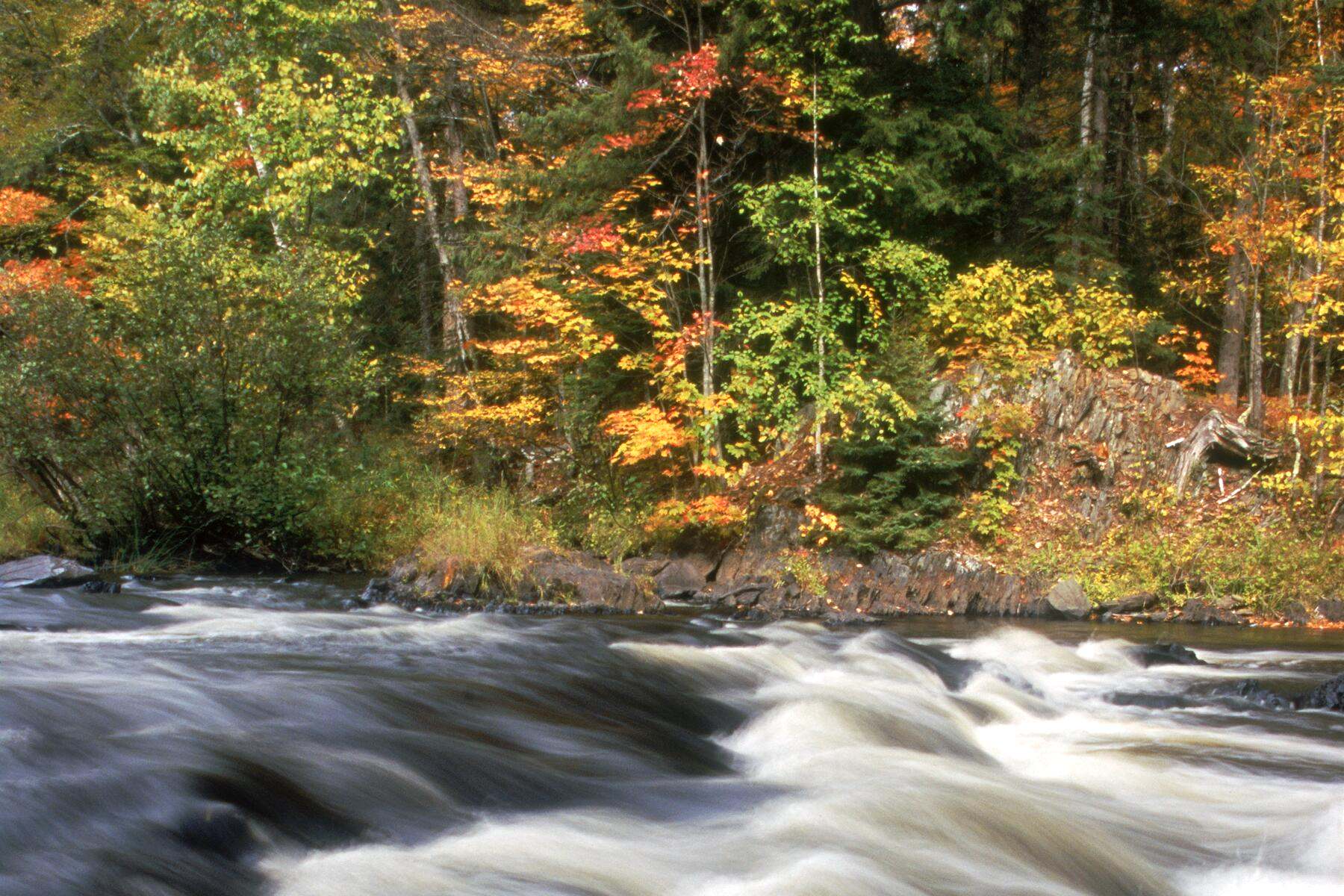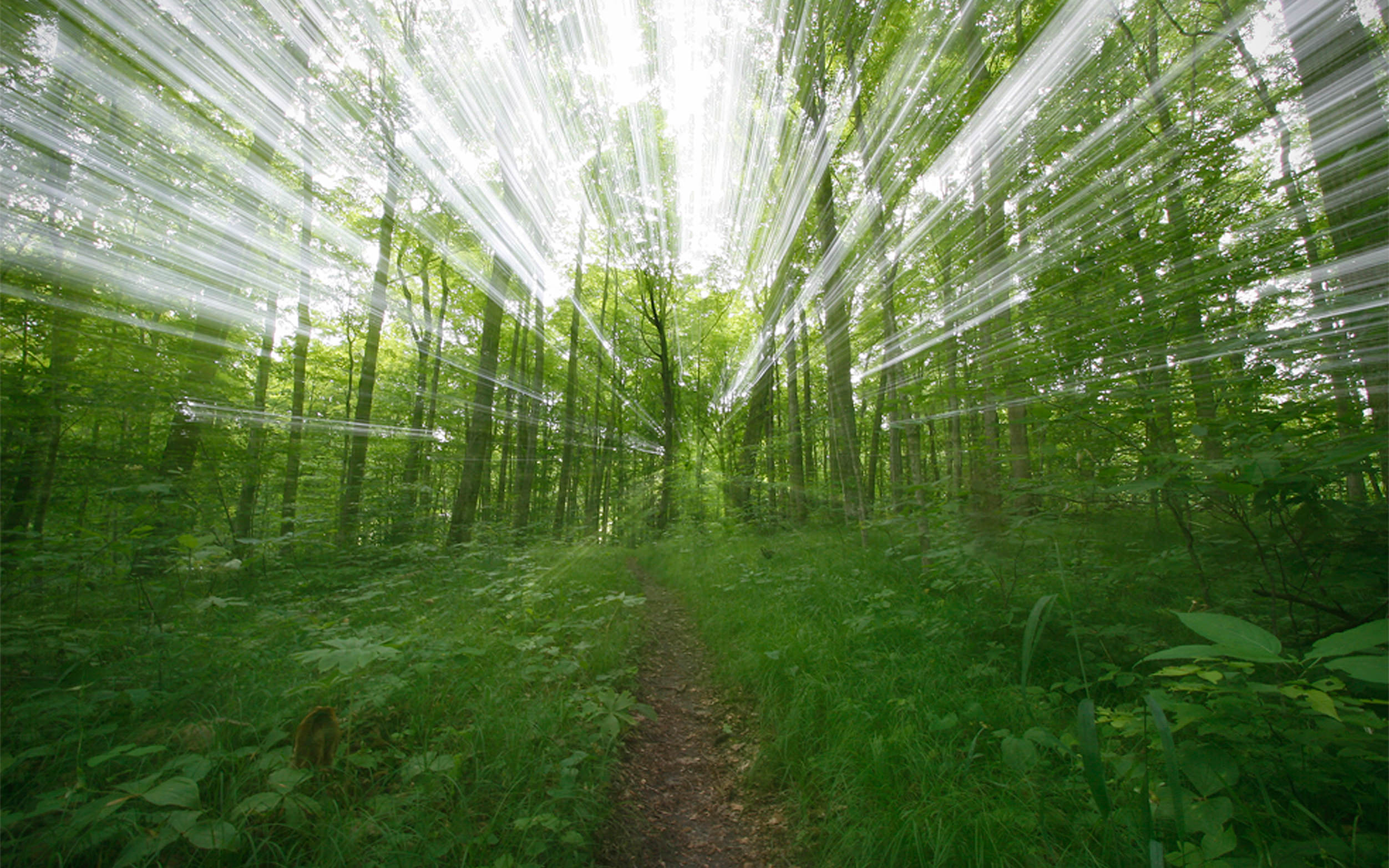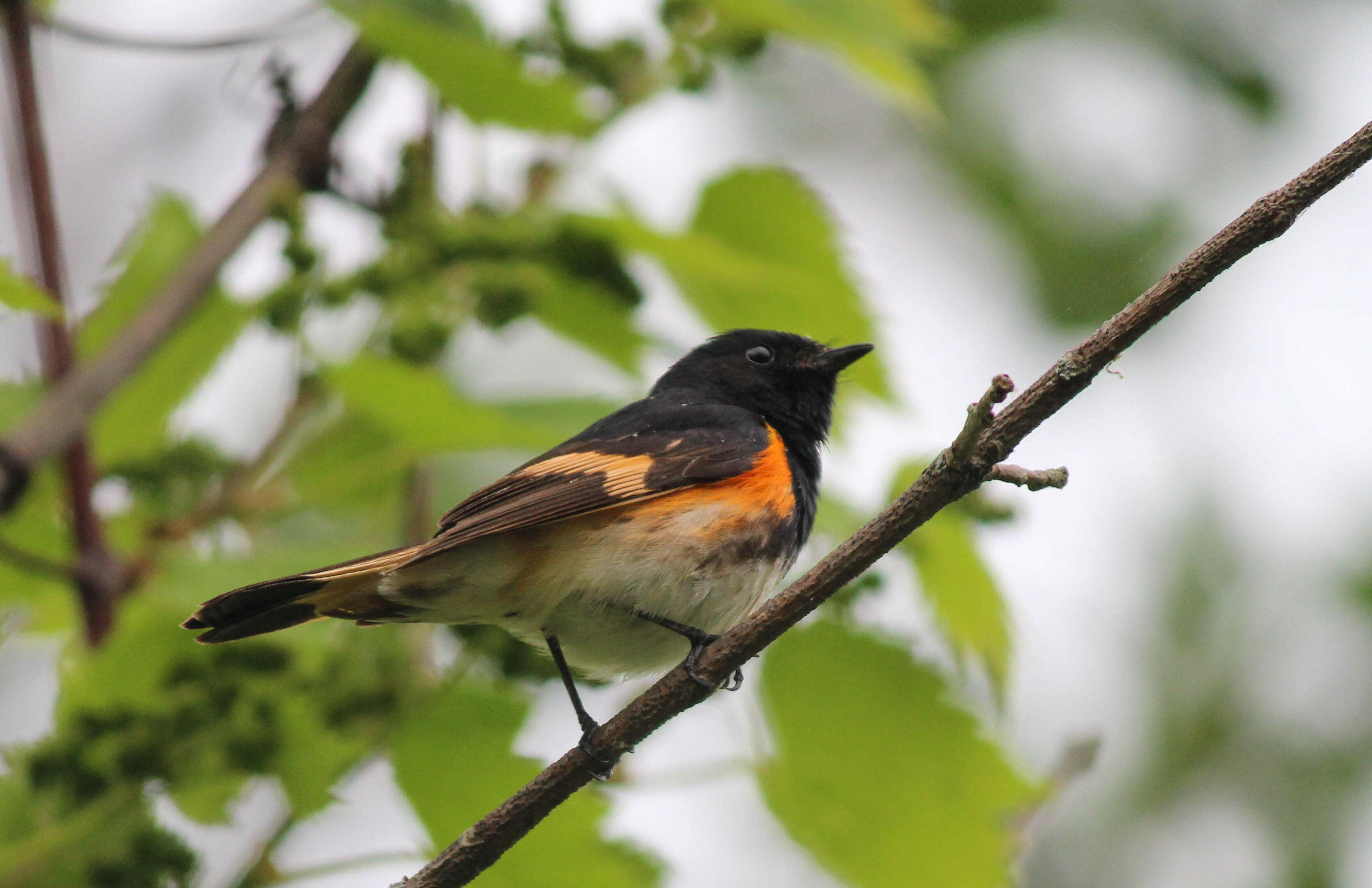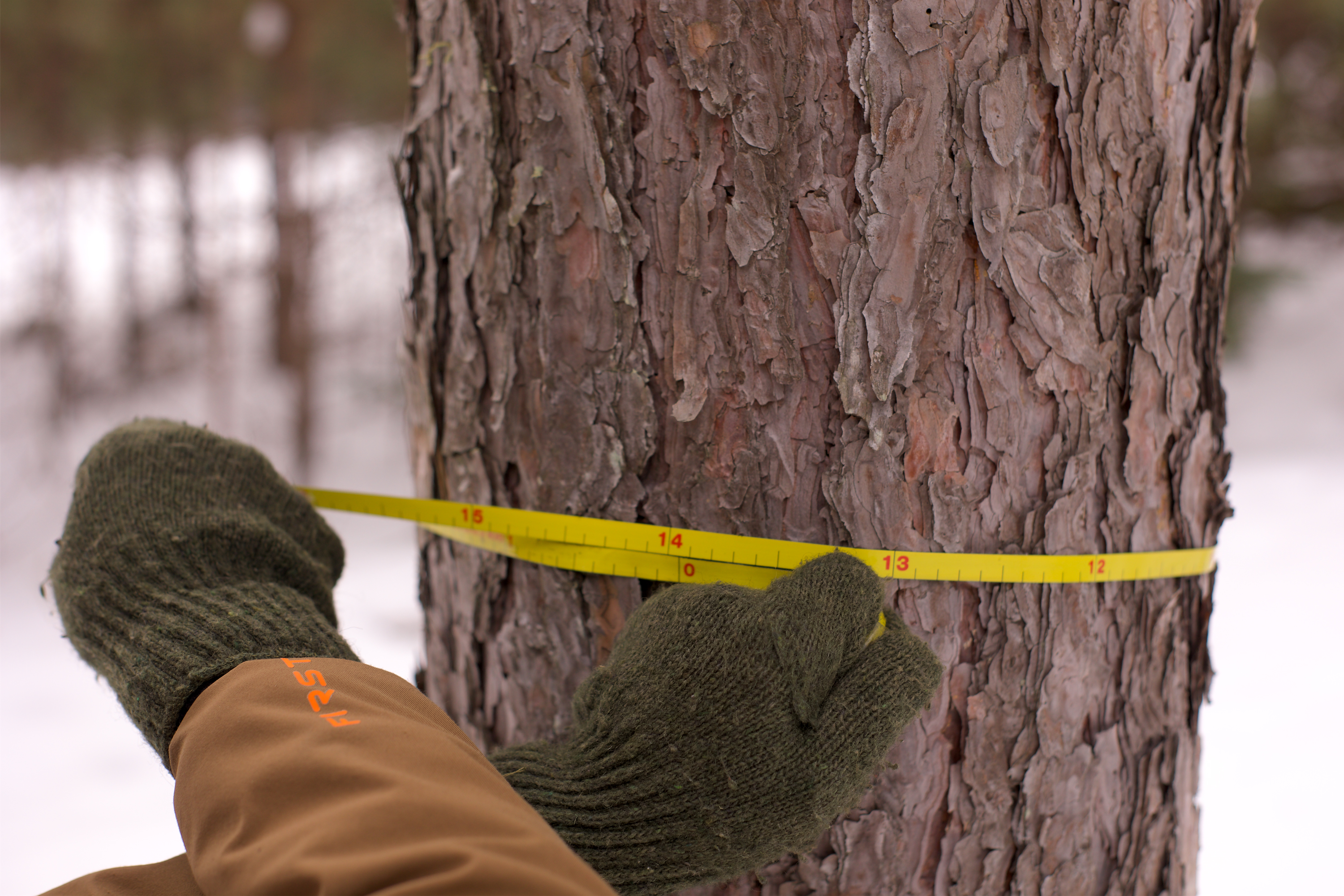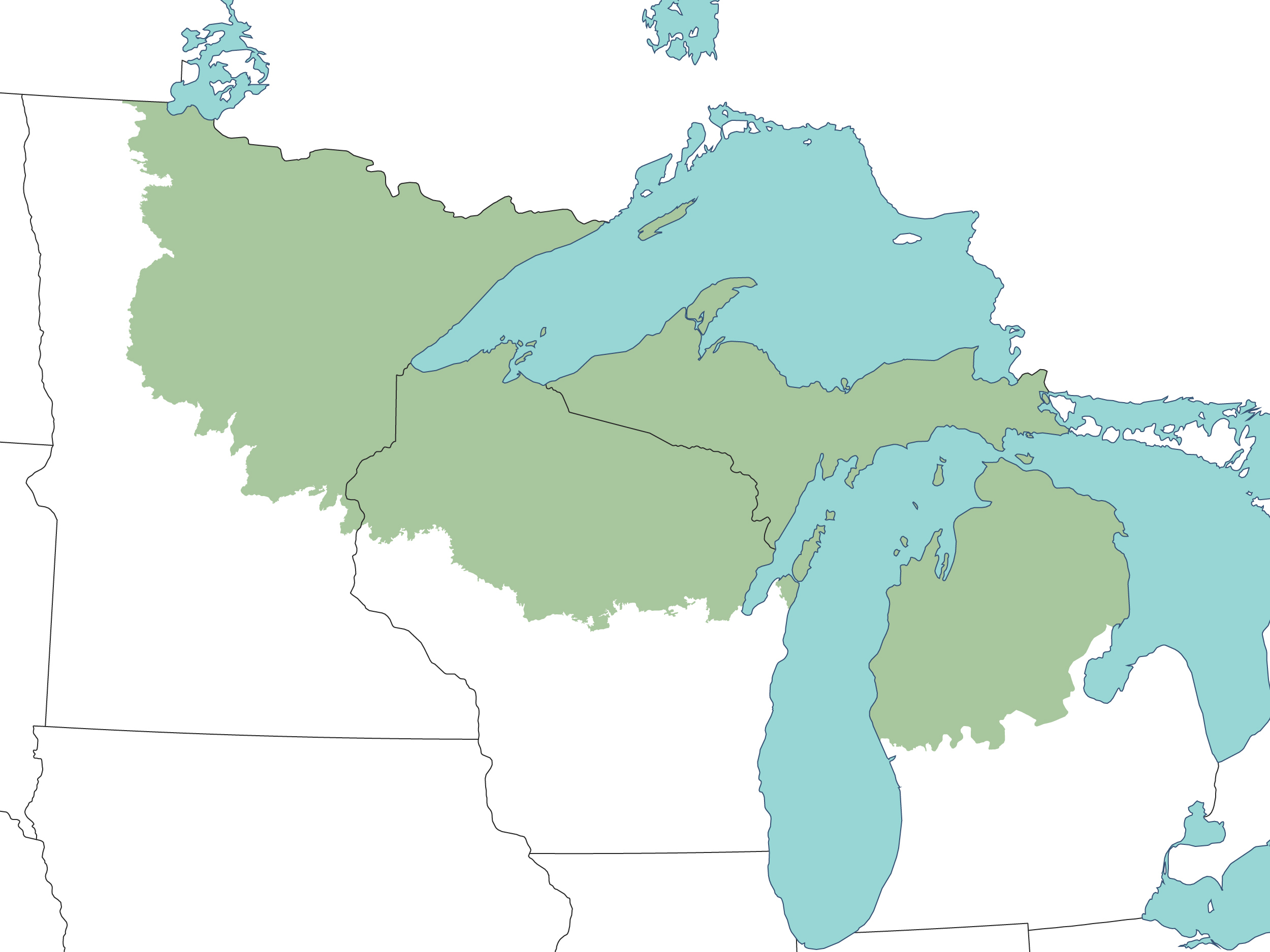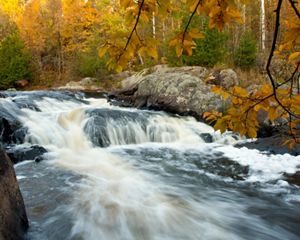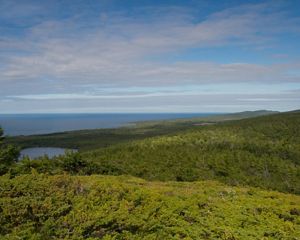Great Lakes Northwoods
This critical landscape provides high-quality freshwater, maintains species biodiversity and naturally stores carbon.
What Are the Northwoods?
A dense blanket of green covers the northern parts of Minnesota, Wisconsin and Michigan. Pine, maple and spruce trees spread wide branches that filter the sunlight and fill the air with an aromatic tang. Here and there, pockets of water gleam: thousands of glacial lakes carved out of the land during the last Ice Age. Spanning over 60 million acres, the Northwoods are home to moose, gray wolves, pine marten, black bears and over 200 species of migratory and resident birds, including migratory songbirds. They’re the headwaters for two of the world’s largest freshwater systems: the Mississippi River and the Great Lakes. And they’re a key landscape for climate mitigation, soaking up carbon on a globally significant scale.




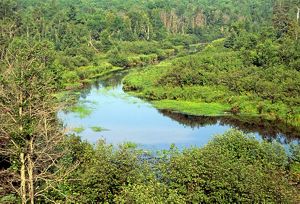
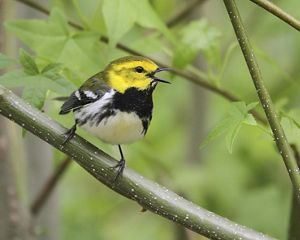


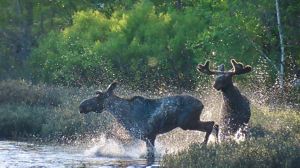


Northwoods Forest: Catherine Wolter Wilderness Area protects more than 36,000 feet of undeveloped shoreline on 15 wild lakes and ponds. © Jim Schumaker

Common Loons: Listen for the eerie call of loons or watch them dive for fish on the lakes at this beautiful Northwoods preserve. © Marci Lanois/TNC Photo Contest 2022

Gray Wolf: The Northwoods provide critical habitats for diverse plant and wildlife, including the gray wolf. © Robert A. Kleppin

Shore of Caroline Lake: The Caroline Lake Preserve is a great place to experience the serenity and beauty of the wild, undeveloped lakes that epitomize Wisconsin's Northwoods. © Robert A. Kleppin

Bad River, Wisconsin:: The headwaters of the Bad River are formed at our Caroline Lake Preserve in Iron County. © Robert A. Kleppin

Black-throated Green Warbler: Listen for this stunning warbler’s persistent “trees trees I love trees” song from high in the treetops. © Jeff Lewis

Large-flowered Trillium: Large-flowered trillium at Rum River State Forest in Minnesota, United States, North America. © Donald Kaddatz

Common Spiderwort: Common spiderwort (Tradescantia ohiensis), Chiwaukee Prairie State Natural Area, Wisconsin. © Clint Farlinger

Moose Haven: Moose thrive in the forested wetlands of Michigan’s Upper Peninsula. © Rich Swanson

Timber: Logging decks stacked with individually selected timber taken from easements in Michigan's Upper Peninsula. © Drew Kelly
Additionally, climate change is forcing species to move to new territories—which means they need connected landscapes through which they can travel. The Northwoods contain some of the most resilient and connected lands in the central United States. This includes six National Forests; two National Parks, two National Lakeshores, the Boundary Waters Canoe Area and more than 60,000 miles of streams and rivers.
Why are the Northwoods worth protecting?
A Call to Action
The Northwoods are the past and current homelands of the Anishinabewaki, Bdewakantuwan, Bodwewadmi (Potawatomi), Hoocak (Ho-Chunk), Myaamia, Ochethi Sakowin, Odawa, Omaeqnomenew-ahkew (Menominee), Sisseton and Wyandot tribes that have stewarded these lands for thousands of years. As European settlers pushed west, about 40% of the Northwoods were cleared for farming and never grew back as forest. In the remaining forest, large-scale logging operations in the nineteenth and twentieth centuries dramatically changed the landscape. For example, the amount of old growth forest was vastly reduced (complex, diverse forests generally greater than 120 years old). In Minnesota, prior to European settlement, more than 50% of the forest was old growth, but now that number is less than 6%. Old-growth hemlock forests were once a dominant forest type in Wisconsin and Michigan, but they have been reduced to less than a tenth of 1% of their original extent.
Parts of the Northwoods are still recovering from past harvesting and many forests are of a similar age and lack complexity and diverse structure. The forests also face continued development pressure, conversion to agriculture and other uses, over-browsing from an abundance of white-tailed deer, pests and pathogens, invasive species and increased stress from the impacts of a rapidly changing climate—all of which make their recovery challenging.
But there is hope. Large portions of the Northwoods are recovering, thanks to protection of forest lands and the adoption of sustainable timber harvest practices. As the forest ages and expands into areas that were once cleared for farmland, the animals that depend on this habitat are returning also.
Ecosystem recovery does not happen easily or quickly. As climate change amplifies the stresses on these forests and the species that live there, we must continue to innovate and seek creative ways to restore and protect the Northwoods. TNC’s efforts will help us reach our 2030 Goals for conservation.
Our Work in the Northwoods
Minnesota
In Minnesota, we are working with partners to help bring back white pine and other long-lived conifers to Minnesota’s Northwoods, benefiting both the forest and forestry. That means planting conifer seedlings, protecting them from deer and pruning young trees to discourage diseases like blister rust. Selective logging of large areas can also play a role by mimicking natural disturbances that create openings for new generations of trees yet avoid older and increasingly rare native trees that serve as sources of seed. Learn More.
Wisconsin
Despite intensive logging in Wisconsin’s Northwoods from the late 1800s to the 1930s, the forest at the Caroline Lake Preserve still harbors all tree species it once did—hemlock, sugar maple, white pine and white cedars, to name a few. But the forest has changed. The larger, older age class of trees are missing, and as a result, so are the unique micro habitats for insects, cavity nesting birds and bats.
TNC in Wisconsin's goal is to create a more diverse forest of tree species, age and structure. A diverse forest will be more resilient to changing conditions, including climate. Learn More.
Michigan
Rising from the blue waters of Lake Superior, the Keweenaw Peninsula is one of the most unfragmented forested and freshwater areas in the central U.S. In 2022, TNC stepped forward to help the community achieve a historic protection deal here, by purchasing more than 32,500 acres of former timberlands known as the Keweenaw Heartlands. Learn More.
Learn more about our Northwoods work in Minnesota
Learn MoreMinnesota
In Minnesota, TNC owns about 12,000 acres of the Northwoods, but our influence stretches far beyond our own lands. In the 2000s, we worked with partners to place Working Forest Conservation Easements on over 338,000 acres of forests. Now, we have a major focus on increasing diversity and climate resilience on over 50,000 acres of forests owned by our partners, including the U.S. Forest Service, Minnesota Department of Natural Resources, county governments, tribes, other nonprofit organizations and individual landowners.
Since 2005, we have planted over 10 million trees on these lands, and we aim to plant at least one milion trees per year through at least 2030. We’re focusing on species like white pine and oaks, which have more resilience to climate change impacts. Bringing back the trees has a ripple effect with benefits for many other species, from songbirds to trout. We also work with partners to reduce fire risk and increase the use of prescribed fire to enhance the health of the forest.
Contact Jim Manolis, forest conservation program director for Minnesota and our lead on Northwoods work in that state.
Learn more about our Northwoods work in Wisconsin
Learn MoreWisconsin
In Wisconsin, TNC owns about 5,000 acres of Northwoods. These lands range from old-growth forests with undeveloped lakes to a former industrial timber–owned property, where we are actively managing the forests using the latest climate science. We have also worked with partners to place Working Forest Conservation Easements on more than 100,000 acres of forestland. These easements allow a landowner to keep the property in private ownership and retain access to the rights to sustainably manage the forest, while greatly reducing the fragmentation of habitat, keeping the land open for public recreation and providing oversight to ensure that sound forest management is practiced.
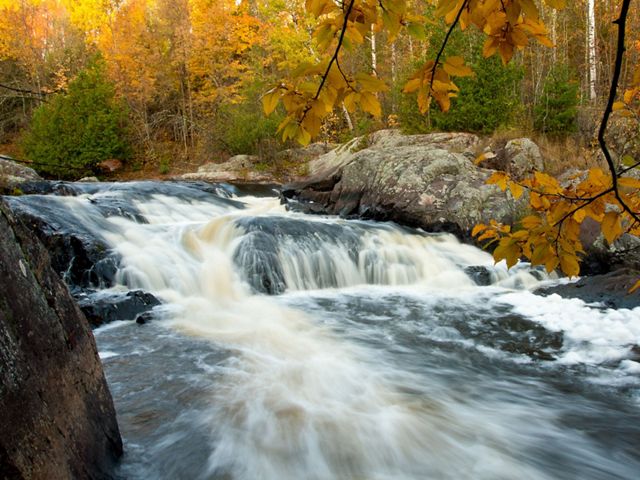
We also work with government entities to improve management of public lands, through stewardship agreements that direct revenue from timber back into forest management, and we partner with Indigenous Tribes on forest management. In 2004, we helped rematriate nearly 25,000 acres of industrial forest lands to the care of the Bad River Band of Lake Superior Chippewa. We continue to work closely with the tribe to manage and help restore the forest.
Contact Matt Dallman, deputy state director for Wisconsin and our lead on Northwoods work in that state.
Learn more about our Forestry work in Michigan
Learn MoreMichigan
TNC owns and manages more than 96,000 acres in the beautiful Upper Peninsula (U.P.), and we have helped protect many more. In 2005, TNC and the state of Michigan coauthored a landmark public private partnership called the Big U.P. Deal that preserved more than 270,000 acres of forest and wetlands. It was the single largest conservation deal in Michigan history and established TNC’s first forest reserve in Michigan, the Two Hearted River Forest Reserve.
Today, TNC owns four forest reserves in Michigan (a reserve is a conserved property where active forestry management is present), including the Wilderness Lakes Reserve and Slate River Forest Reserve. These properties lie within the Michigamme Highlands, 1,200 square miles of lush green forest with high conservation value, and important potential to support sustainable economies.
Michigan’s forests support nearly one million jobs and a $20-billion forest economy. Sustainable forest products are an important part of this economy that support local jobs and keep forests on the land. In 2022, TNC partnered with the Michigan Forest Biomaterials Institute to produce the interactive resource A Great Future Ahead with Michigan’s Forest Biomaterials, about the prospects for a booming bioeconomy in the state. TNC also works extensively with partners to support forest restoration far beyond the lands we manage. For example, we work with the U.S. Forest Service to help restore wetlands and stream corridors in Michigan's national forests, by planting trees in areas threatened by forest pests. We also help keep the U.P.'s thousands of miles of rivers healthy by improving stream crossings and restoring connectivity.
Contact Emily Clegg, director of land and water management in Michigan with questions about our Northwoods work in that state.
Strategies to Protect and Restore the Northwoods
TNC and partners are working on multiple fronts to protect and continually restore this critically important landscape. The strategies used include working to keep the land forested, managing the forests by encouraging a healthy diversity of tree ages and species, bringing back beneficial fire and helping to maintain a sustainable and healthy forest products industry.
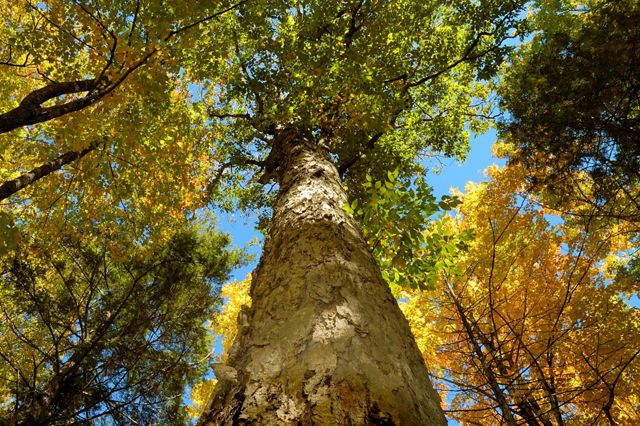
Land Protection
We protect land by purchasing it directly, obtaining conservation easements that keep the land forested in perpetuity, and working collaboratively with partners to improve protection and restoration of their lands. Our partners include communities, Indigenous Peoples, government agencies and landowners.
TNC and partners use a variety of protection tools to conserve and restore the Northwoods. Click on the headers below to read more.
Tools In Our Toolkit
-
Land conservation happens in the governor’s office, in conference rooms and in meetings with legislators.
-
When acquiring land, we focus on property that forms large, connected swaths of key habitat. This provides wildlife with habitat corridors so they can adapt to the shifting conditions imposed by climate change.
-
We have already planted over two million trees across 15,000+ acres. Trees reduce erosion and filter water, protecting the health of systems like the Great Lakes, which supply drinking water to 40 million people.
-
Our goal is a forest that is diversified both in species and in tree ages. We also work with partners and serve on forestry councils to direct funding to Northwoods conservation.
-
After learning what works best through trial and error at TNC-owned properties, we share this information with partners and others to improve forest management and restoration on a larger scale.
-
Although invasives are not a major issue across the Northwoods, we expect they will become a more serious problem soon. One concern is the emerald ash borer, against which trees have little defense.
-
This type of economy is based on sustainable forestry and forms of recreation that use our forests without diminishing their ecological value. We encourage landowners to seek Forest Stewardship Council certification for their sustainably managed forestlands.
-
Our Working Woodlands initiative assists owners of larger properties (more than 5,000 acres) with applying climate-friendly management practices and enrolling in carbon markets. For owners of smaller properties, we developed the Family Forest Carbon Program in partnership with the American Forest Foundation.
-
We work with Indigenous communities, the outdoor recreation industry, state and federal owners and many others to increase access to public lands and empower communities to care for their lands.
Better Forest Management
A healthy forest includes diverse tree species and a range of trees of different ages in a connected landscape that provides access to a variety of habitats. It takes active intervention to achieve this diversity in recovering forests, but the result is worth the effort. More complex forests can support more species and are more resilient to environmental stresses, including climate change effects. Songbirds, bats, many other wildlife species and many plants benefit from a diversified forest.
One way to promote diversity is through sustainable timber operations that utilize the latest climate science to guide management. We know the forests of the future will look different from how they looked in the past. Across the Northwoods, TNC has worked with partners from the U.S. Forest Service to develop climate change field guides that will assist managers as they develop forest harvest methods that increase forests’ resilience to change. Utilizing climate-smart forestry will ensure that our forests are composed of young and old trees and include a diverse mix of species that will be better adapted to the future climate and more able to sequester carbon.
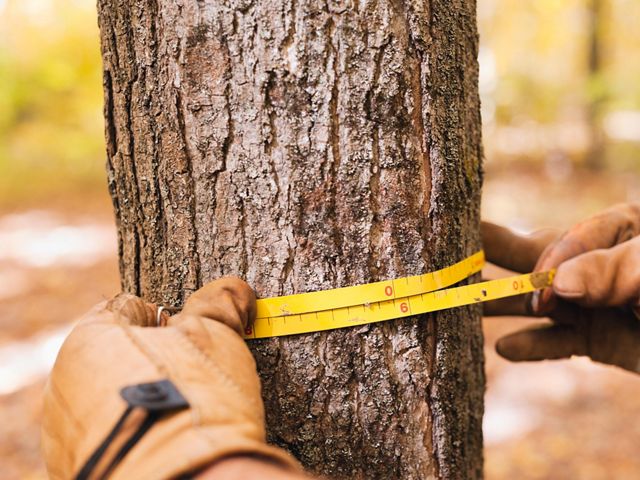
Another piece of the puzzle is bringing back fire to the Northwoods. The region includes fire-dependent ecosystems that have not burned for centuries. Periodic fire maintains the health and diversity of the forest, keeps species in balance, gives native species an edge over invasives and returns nutrients to the soil. There is a great need for more trained fire professionals and funding for this type of work.
TNC is also looking for ways to maintain a sustainable and healthy forest products market. A strong market for forest products like timber, furniture, decorative wood, paper and other commodities will provide an economic reason for landowners to keep their forests as forests rather than converting the land to other uses, such as agriculture.
Forests for Climate Mitigation
Restoring the forest also helps it mitigate the effects of climate change, since healthy forests are able to sequester and store more carbon. TNC has created guides to climate-smart forest management for landowners and managers. Our partners on this effort include the Northern Institute of Applied Forest Science, the U.S. Forest Service and the Wisconsin Initiative on Climate Change Impacts.
The Future of the Northwoods
The Northwoods are a potential powerhouse for the climate, offering natural climate solutions on a globally significant scale, as well as supporting biodiversity, clean water, jobs and recreational opportunities. TNC has been active in Northwoods conservation for decades, working with our partners to protect and restore this special landscape. We’ve achieved landmark successes like the return of nearly 25,000 acres of industrial forest lands in Wisconsin to the Bad River Band of Lake Superior Chippewa and the Big U.P. Deal that protected more than 270,000 acres of Michigan forests.
But there is much more to do. By investing now in caring for this landscape, we can ensure that the Northwoods will be around for generations to come.
